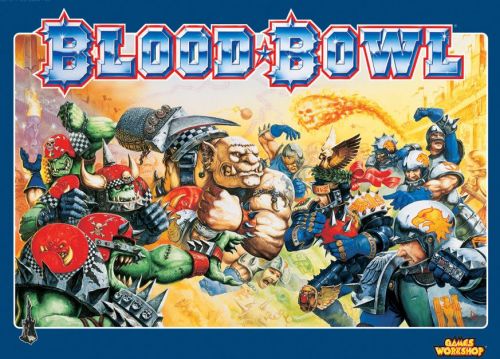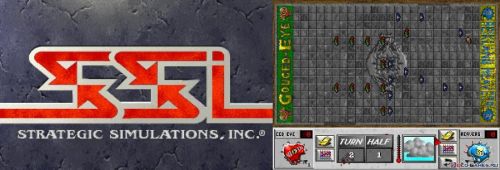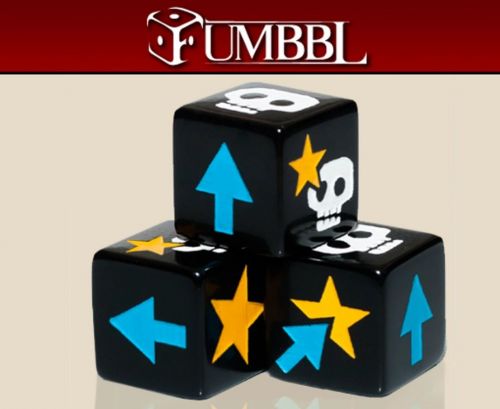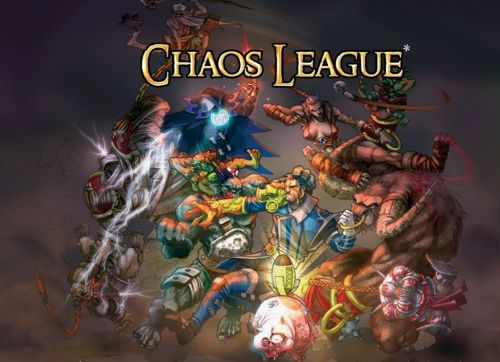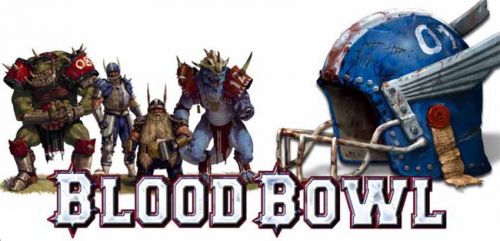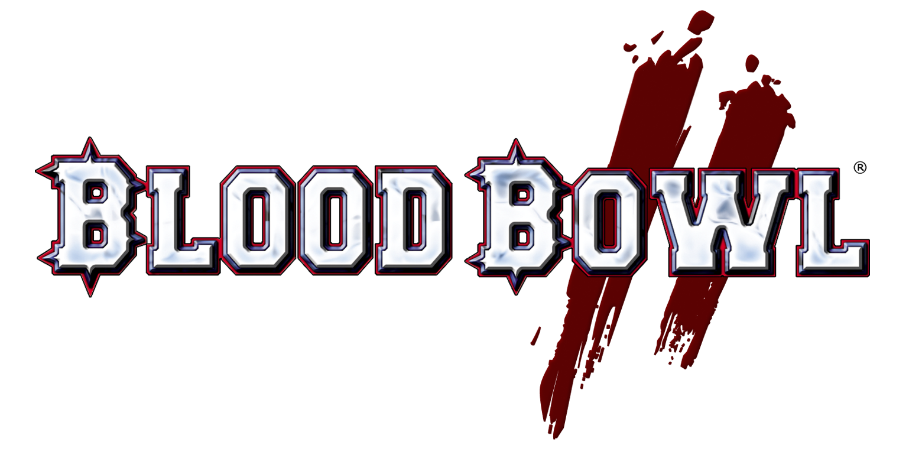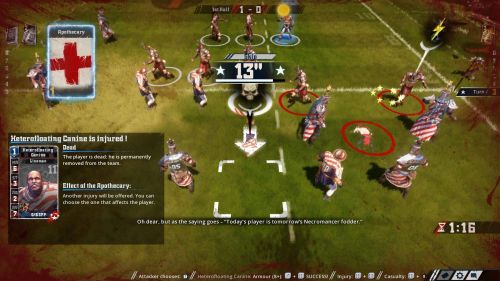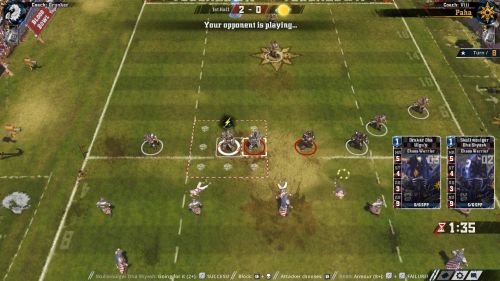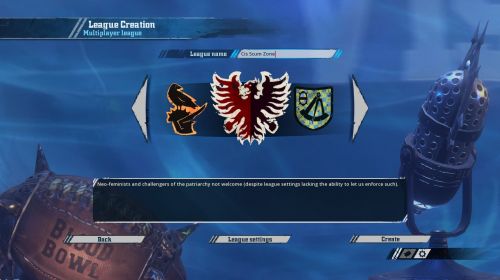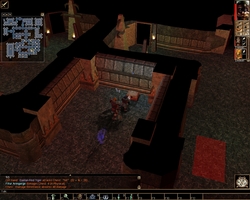RPG Codex Review and Digital Retrospective: Blood Bowl 2
RPG Codex Review and Digital Retrospective: Blood Bowl 2
Review - posted by Grunker on Wed 18 November 2015, 13:51:06
Tags: Blood Bowl; Blood Bowl 2; Cyanide StudioRPG Codex has strong ties to Games Workshop's Blood Bowl title, as our users have been competing against each other in digital versions of the game since our first in-house league in 2009, run by Mantiis. The game has since served as the perfect venue for talking smack about and harassing fellow Codexers, and so it was with typical trepidation that we received the news of a sequel to 2009's Blood Bowl being in development.

In many ways, Blood Bowl 2 shares similarities with favourite Codex sequels like Baldur's Gate 2, Fallout 2 or Ultima VII: Serpent Isle in that it reuses so much from its original that it allowed its developers to focus more on content and polish than on developing systems from scratch. Does Blood Bowl 2 manage the same building-upon-solid-content improvements as the other games?
Well, we all knew where this was going. But at least the review also has a great look into Blood Bowl's digital past, which is coloured by Codex-favourite SSI! So there's that.
Read the full article: RPG Codex Review and Digital Retrospective: Blood Bowl 2

In many ways, Blood Bowl 2 shares similarities with favourite Codex sequels like Baldur's Gate 2, Fallout 2 or Ultima VII: Serpent Isle in that it reuses so much from its original that it allowed its developers to focus more on content and polish than on developing systems from scratch. Does Blood Bowl 2 manage the same building-upon-solid-content improvements as the other games?
The question is whether Blood Bowl 2 succeeds in this delicate feat of renewal via reproduction. Did Cyanide manage to balance their new engine with the old systems to craft what is essentially a more polished, more playable, more content-rich, digital Blood Bowl game?
In the absence of an adequate ‘hahano’ gif, I have decided to instead provide you with the following review. Blood Bowl 2 is one-third regression, one-third status quo and one-third minor improvements.
In the absence of an adequate ‘hahano’ gif, I have decided to instead provide you with the following review. Blood Bowl 2 is one-third regression, one-third status quo and one-third minor improvements.
Well, we all knew where this was going. But at least the review also has a great look into Blood Bowl's digital past, which is coloured by Codex-favourite SSI! So there's that.
Read the full article: RPG Codex Review and Digital Retrospective: Blood Bowl 2
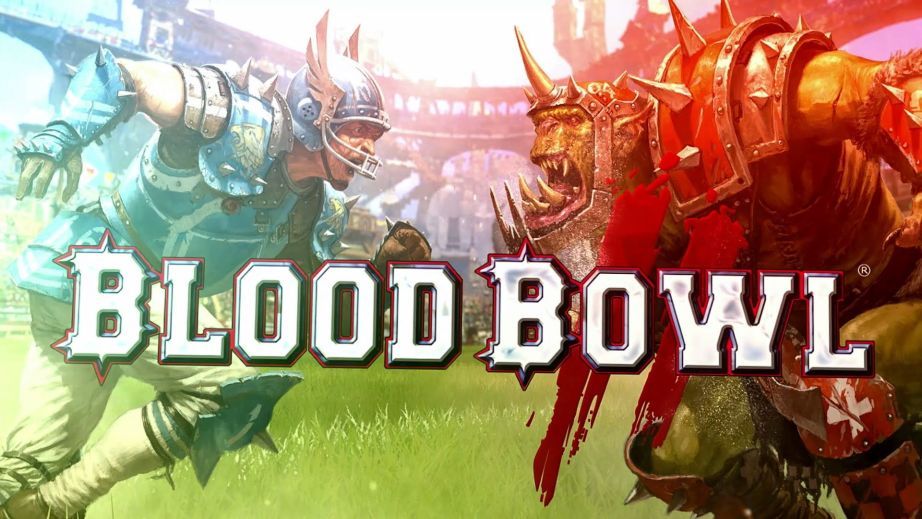
A digital retrospective on the Blood Bowl series and Blood Bowl 2 review, by Grunker.
PART I: BLOOD BOWL DIGITAL RETROSPECTIVE

PART I: BLOOD BOWL DIGITAL RETROSPECTIVE

Like most people, I have different groups of friends from different walks of life. When I socialize with each group, we engage in different activities. For example, I regularly watch football with some old mates from high school. Or soccer, as you kwanzanians would call it, for the same reasons you insist on measuring distance with the anatomical structures you use for locomotion. Likewise, when I play pen & paper, it is with people I met mostly during public school. Sometimes I drown myself in red wine and discuss pretentious movies while playing board games – mostly with friends from my university days.
Rarely if ever do these groups overlap. Attempts to introduce people from the different aspects of my social life have mostly ended in awkward disaster. My pen & paper group in particular seems to hate anything sports-related, while the guys from university have little interest in roleplaying games.
Undoubtedly, I have friends who engage in activities that I, too, would find terribly dull. The point is that it is very rare for distinct interests to overlap, and so even rarer that products are developed that cater specifically to odd combinations of such.
In this light, the existence of Blood Bowl is itself something of a mystery. The game is a timeless classic because it combines the excitement and nail-baiting tension of sports with the tactical ability and foresight required to play board games, as well as the self-expression made possible via character development and customization from RPGs. Having gone through six iterations of core rules, the current game has the strong identity of something that has been tested and tinkered with throughout a lifetime. It is an evergreen piece of entertainment that successfully merges genres that, while seeming like oil and water on the surface, fit together with natural grace. The reason the seemingly disimilar components of Blood Bowl - sports, board game and RPG - fit so well together, is that they contribute to the same core of variance and competitive gaming.
A Man’s Game
Broken down to its most basic components, Blood Bowl as a game consists of three parts. The first of these parts is a highly compelling team development portion in which you hire and fire players and manage their level-ups. The second part is a game portion in which two coaches each field 11 players and attempt to murder, foul and maneuver their way to a touchdown. Lastly, binding the two first parts together is league management: dictating which teams face each other when, how and under what circumstances.
The lubricant that keeps the three distinct parts of Blood Bowl grinding their gears, without getting stuck, is variance. It ties the die rolls of an RPG to the complex movement of two American football teams weaving through each other on a pitch. It glues everything, from an elf's agile pass to an orc's crushing fist, to the same system of risk versus reward. Blood Bowl has more variance than most games you will ever play, and at its core, managing this variance is what the game is all about. As in any game of variance, a good coach will minimize risk and capitalize on opportunity, but Blood Bowl is different in that no matter who you are or what team you are playing, taking significant risks is an unavoidable part of the game. Consequences of failure can be brutal, game-losing and even permanently damaging to your team. Your star player - developed through hundreds of games of Blood Bowl - might suddenly and irrevocably die from slipping on the grass. With this variance and its harsh consequences, Blood Bowl merges the tactical control of a strategy game with the random and unfair reality of sports where an injury can wreck your plans for the season, or a referee overlooking a foul can result in a game loss.
As such, Blood Bowl is about dealing as much as it is about winning. It is about trying to maintain control of the uncontrollable. It is about staying cool while luck abandons you and the feeling of tilt sets in. It is about accepting that fate took away your chances of winning a game and then manifesting the patience required to bring home the tie that keeps you in the running for first place. It is about looking at your wrecked team of completely smashed-to-bit players and realizing the cup is out of reach – but that placing 4th with this broken shell of a team would be a feat other coaches would salute you for.
In other words, Blood Bowl is a man’s game – regardless of the genitalia you might actually be sporting. If you whine when things do not go your way, if you often quit when things do not go as planned, or if you are the sort who cannot own and deal with misfortune easily, the amount of enjoyment you find in the game is limited.
As great as Blood Bowl is as a board game, it plays even better on the PC, at least in theory. Getting to the meat of the game – moving the pieces, outsmarting your opponent, developing your team through long leagues that last half a year or more – is simply much better suited to a digital environment. Both because it minimizes micromanagement, but also because it allows players to connect with each other from across the world.
It is odd, then, that Blood Bowl’s history as a digital product has been plagued by terrible releases of dubious quality.
Gettin' Digi With It
The first attempt to digitalize Blood Bowl came about as early as 1990. Tynesoft, a company behind a slew of games you probably do not and should not know, suggested the idea of building a Blood Bowl conversion on top of one of their existing games to Games Workshop. Games Workshop eagerly accepted, but, as time would soon tell, GW’s ability to pick competent developers would turn out to be nearly non-existent. Tynesoft went bankrupt before the game was even halfway done.
In 1995, Games Workshop handed the reigns for the Blood Bowl license to a much more seasoned developer. This developer you should know – if you do not, you are probably on the wrong website. Strategic Simulations Inc. have fathered some of the arguably best titles in RPG history – titans like 1988’s Pool of Radiance, 1990’s Eye of the Beholder and 1993’s Dark Sun: Shattered Lands. Without SSI, it is doubtful that games like Fallout or Baldur’s Gate would have existed, and thus equally doubtful that RPG Codex would ever have been a thing.
Despite the experienced developer however, things did not go as planned. 1995’s Blood Bowl was received with a ‘meh’ from reviewers and fans alike. Games Workshop decided that that was it, and it would not be until 2009 that Blood Bowl would once again see an official, digital release.
In the meantime, Blood Bowl coaches everywhere were clamoring for some bowlin’. Tournaments of Blood Bowl (the board game variety) are hard to find, and with the popularization of the internet, coaches were starting to meet online. Demand for a digital multiplayer product was rising. The end result was the fan-developed client FUMBBL. It is probably the most basic way to play Blood Bowl, even today where, thanks to a new client developed in Java, there are some decent graphical representations of both pitch and players. Ironically, FUMBBL was – and is to this day – probably the objectively best version of Blood Bowl in terms of adhering to the game’s three core tenets: team management, playing games, and a functional league structure. There is full-fledged, rules-adherent team development. There is a vast variety of leagues from the “Blackbox” offering blind matchmaking to large, season-based leagues and small, short private leagues. In addition, the game works without a hitch, and any time a player suffers a connection drop or a similar problem, the game can simply be saved and picked up from its last known state at any point in the future. FUMBBL even sports a few obscure races that have not seen release even in 2009’s Blood Bowl, despite the latter's two expansion packs, such as the Slann and the Chaos Pact.
In short, FUMBBL – a free, fan-developed client for bowlin’ – remains to this day the only digital version of Blood Bowl devoid of problems. Save, of course, for the primitive graphics and the steep learning curve for actually planning matches. In 2015 you still need an IRC client and some tinkering with the FUMBBL website to play in the Blackbox, for example.
In the Noughties
In 2004, Blood Bowl was an all but obscure, forgotten title digitally as well as physically. Betting that the license was effectively abandonware, French developers Cyanide took it upon themselves to go and do something about that. Chaos League was Blood Bowl in all but name, and, considering its budget, the game ended up selling fairly well. Games Workshop, of course, took Chaos League as a massive slight against their company, even though they had not cared much, if at all, about the license for the past 10 years. Legal battles quickly ensued. Knowing that they would probably lose – and suffer a financial hit that could cripple the company – Cyanide scrambled to find a way out of their troubles. Looking at Cyanide’s history, one will find a long list of broken, mediocre games, all released to poor reviews and dissatisfaction among the player base. How does such a company manage to stay afloat over the course of 15 years?
One might attribute their survival to no small amount of business savvy. In the legal struggles against Games Workshop, whoever it is at Cyanide who possesses this affinity for negotiation won out again. GW agreed to a settlement outside of court - a settlement that would be remembered as one of the oddest deals struck in video game history. In essence, Cyanide agreed to develop no fewer than three digital Blood Bowl titles over the coming years – with a large margin of the profits and a significant one-time fee ending up in the pockets of Games Workshop.
So it came to be that 2009 saw the release of Blood Bowl – a title that would set the standard for all releases under the license in the near future. This standard would be one where the original game is released with few teams, a broken league structure, a multitude of bugs, custom rules that no one asked for and a total, deafening silence from Cyanide regarding questions and feedback from the community. Cyanide’s exorbitant failures to communicate became mythic in time. Under the title “Blood Bowl 2 Shows Why Developers Should Communicate More”, Kotaku writer Alex Walker noted the following:
“There’s no mention of why, for instance, aging players were introduced at all. There are plenty of reasons for its inclusion – it makes lengthy leagues slightly more interesting and stops the player market from becoming saturated, but Cyanide never bothered to prosecute this argument to the public. They simply let fans discover changes as footage and the beta rolled out.
Why were the statistics and costs of units changed from the Living Rulebook and from what was included in previous editions of Blood Bowl? Where is the inclusion of a multiplayer lobby? Is it being patched in the future? What is Cyanide hoping to include in the future?
Nobody knows.”
Why were the statistics and costs of units changed from the Living Rulebook and from what was included in previous editions of Blood Bowl? Where is the inclusion of a multiplayer lobby? Is it being patched in the future? What is Cyanide hoping to include in the future?
Nobody knows.”
Yet despite Cyanide’s complete failure to market 2009’s Blood Bowl, the game as a concept was strong enough to carry it through. The game sold well both in terms of physical copies and on Steam. Soon, a terrible port – probably the worst incarnation of digital Blood Bowl ever made – was developed for the Xbox. In this version, players could not level up and the Dark Elf team was sold separately as DLC.
Even following the catastrophic release of the Xbox version, Blood Bowl continued to sell, and two expansions – also selling well – were released in 2010 and 2012. Dubbed “Legendary” and “Chaos” editions, the first included 11 new teams and fixed a slew of bugs, while the latter included three teams and tidied up the game’s UI and bugs even further. The game even sold well enough for a smattering of spin-offs to see release, like an iPad version of the game, the card game Team Manager and a variation of the core game for the PC called Dungeonbowl (which yours truly reviewed rather unfavourably for the Codex back in 2012).
Half Time
Consider this, then: after two massive expansions and more than twenty patches, Blood Bowl is still a fundamentally broken game. Multiplayer is often impossible without open router ports, the UI has gone through multiple iterations and is still ugly and dysfunctional, game-breaking bugs happen ever-so-often and crashes will ruin your game with no possibility to reconnect and pick up where the game left off. A functionality – may I remind you – the fan-developed client of FUMBBL has now had for more than a decade.
Even basic league functionality is much less advanced than in FUMBBL.
When Cyanide revealed their intention to develop a sequel to Blood Bowl, there was, somehow, still a degree of optimism. With all the experience developing Blood Bowl-titles under their belt, how could the company possibly fail to at least make a slightly improved version of the Chaos edition?
As Blood Bowl fans asked this question, I suspect fans of Cyanide’s yearly Pro Cycling Manager must have watched smugly from the sidelines thinking “oh boy, you have no idea what you’re in for…”
As mentioned in the retrospective, the unprecedented settlement between Games Workshop and Cyanide called for more Blood Bowl titles to be unleashed on the suspecting public. Blood Bowl 2 is essentially a faithful follow-up to the 2009 original: it plays the same, sounds the same and looks roughly the same. This is not a bad thing by definition, of course: some of the Codex’ favourite games are sequels that expanded upon their original’s content and scope via asset and system reuse. Just look at Baldur’s Gate 2, Fallout 2, the Wizardries or the GoldBox games. The question is whether Blood Bowl 2 succeeds in this delicate feat of renewal via reproduction. Did Cyanide manage to balance their new engine with the old systems to craft what is essentially a more polished, more playable, more content-rich, digital Blood Bowl game?
In the absence of an adequate ‘hahano’ gif, I have decided to instead provide you with the following review. Blood Bowl 2 is one-third regression, one-third status quo and one-third minor improvements. As such, one can think of Blood Bowl 2 as a metaphor for Cyanide products in general – well, sans the “minor improvements” bit, perhaps.
Could I Speak to Management, Please
Allow me to start off with a disclaimer: I will not be reviewing the single-player campaign of Blood Bowl 2. Blood Bowl is a multiplayer game by nature, and playing this game versus the AI is quite frankly the equivalent of playing DotA 2 versus bots. The AI is atrocious and even if it was not, the systems that make up a Blood Bowl game make AI programming predictable by definition, meaning that even a sophisticated version could be bypassed by rote learning given just a few games. Blood Bowl 2 boasts an expanded and more focused single-player experience than its 2009 counterpart, so if you still insist on shilling out sixty bucks for a subpar tactical challenge, do not let me stop you.
Now then, on to the meat of the review. Blood Bowl is, as mentioned previously, a concept that consists of three fundamental parts: team management, actual games and a league structure.
In Blood Bowl 2, team creation is, at its core, built like 2009’s Blood Bowl. You create a team of 11 to 16 players and manage their skills, positions and your team staff. The rules that govern the meta-systems of team building have stayed nearly identical, though bits and pieces have, of course, been changed. As our dear Kotaku-writer from the retrospective noted, none of these changes are noted explicitly, instead taking the form of singular lines found buried in patch notes, so finding an explanation for their inclusion is a fool’s errand. On launch, a few skills were missing, but these have later been added in via patches. As the management systems across the two games are so nearly identical, the devil is in the details, as it often is. 2009’s Blood Bowl had an infamously confusing interface, and at least as far as its menus go, Blood Bowl 2 takes one step forward and two steps back. On the one hand, Blood Bowl 2 has better icons and much, much clearer graphical representation of its players, abilities and buttons. On the other, there is no longer a single screen containing all the relevant information about your team – players, staff and other data. Instead, all of these now have their own subsections, which leads to more clicks and more difficulty getting a quick overlook of your team. But overall, team management functions without a hitch, and spending time on what niggles exist seems trivial.
In the absence of an adequate ‘hahano’ gif, I have decided to instead provide you with the following review. Blood Bowl 2 is one-third regression, one-third status quo and one-third minor improvements. As such, one can think of Blood Bowl 2 as a metaphor for Cyanide products in general – well, sans the “minor improvements” bit, perhaps.
Could I Speak to Management, Please
Allow me to start off with a disclaimer: I will not be reviewing the single-player campaign of Blood Bowl 2. Blood Bowl is a multiplayer game by nature, and playing this game versus the AI is quite frankly the equivalent of playing DotA 2 versus bots. The AI is atrocious and even if it was not, the systems that make up a Blood Bowl game make AI programming predictable by definition, meaning that even a sophisticated version could be bypassed by rote learning given just a few games. Blood Bowl 2 boasts an expanded and more focused single-player experience than its 2009 counterpart, so if you still insist on shilling out sixty bucks for a subpar tactical challenge, do not let me stop you.
Now then, on to the meat of the review. Blood Bowl is, as mentioned previously, a concept that consists of three fundamental parts: team management, actual games and a league structure.
In Blood Bowl 2, team creation is, at its core, built like 2009’s Blood Bowl. You create a team of 11 to 16 players and manage their skills, positions and your team staff. The rules that govern the meta-systems of team building have stayed nearly identical, though bits and pieces have, of course, been changed. As our dear Kotaku-writer from the retrospective noted, none of these changes are noted explicitly, instead taking the form of singular lines found buried in patch notes, so finding an explanation for their inclusion is a fool’s errand. On launch, a few skills were missing, but these have later been added in via patches. As the management systems across the two games are so nearly identical, the devil is in the details, as it often is. 2009’s Blood Bowl had an infamously confusing interface, and at least as far as its menus go, Blood Bowl 2 takes one step forward and two steps back. On the one hand, Blood Bowl 2 has better icons and much, much clearer graphical representation of its players, abilities and buttons. On the other, there is no longer a single screen containing all the relevant information about your team – players, staff and other data. Instead, all of these now have their own subsections, which leads to more clicks and more difficulty getting a quick overlook of your team. But overall, team management functions without a hitch, and spending time on what niggles exist seems trivial.

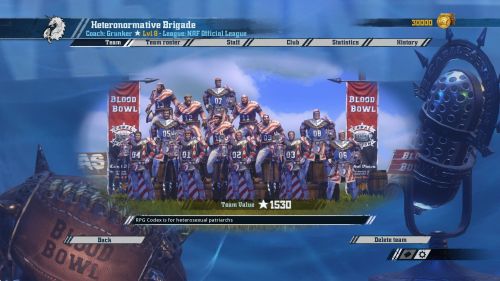
The Codex team, in all its glory, ready to fight the evil feminist conspiracy. Alas, one of our knights - the great Jedi Popzor - died to a Wood Elf's fist in the early stages of his career.
It is also in team management, however, that we find the game’s first unexplained and weird inclusion. As a unilateral decision not explained anywhere and certainly not found in original Blood Bowl material, Cyanide have chosen to let players customize their team’s stadium with new rules depending on the purchased upgrades. The inclusion of this concept is easy to explain: rich teams often have no ways to spend additional cash in Blood Bowl, and stadiums serve as a sink for extra gold. The stadiums enforce new rules on the teams playing on them – extra re-rolls for both teams, for example. The concept is a neat idea, but it is woefully unbalanced, undocumented and much worse: it is enforced in all leagues, even private ones. Purists looking for a simple game of vanilla Blood Bowl will find no quarter in Blood Bowl 2, and this applies to more rules than simply the stadiums.
When it comes to player customization, Blood Bowl 2 has roughly the same amount as 2009’s Blood Bowl – a bit more in some spots, a bit less in others. Overall, though, you will have difficulty telling your players apart on the field. This is worsened by the fact that players no longer change appearance as they level up, making it much, much harder to distinguish between them.
When it comes to player customization, Blood Bowl 2 has roughly the same amount as 2009’s Blood Bowl – a bit more in some spots, a bit less in others. Overall, though, you will have difficulty telling your players apart on the field. This is worsened by the fact that players no longer change appearance as they level up, making it much, much harder to distinguish between them.
Judging by the meager complaints this review has so far, it would seem like Blood Bowl 2 more or less nails the team management of Blood Bowl. This is nowhere close to the case however, and the chief offender here is the inclusion of only a tiny handful of Blood Bowl’s sprawling roster of weird and wonderful teams. At the end of its era, 2009’s Blood Bowl included 23 teams. Of these, only nine made it into Blood Bowl 2, in addition to the new addition of the Brettonians. Apologetic defenders of this decision will remind us that 2009's Blood Bowl also launched with less teams. While this is correct in a descriptive, matter-of-factly sense, the question is why on earth anyone would want to repurchase the same game with less content for full asking price? As I mentioned in the lead-in to this review, the expectation from carbon-copy sequels is that they have more content than their predecessors. Not less.
A perhaps-acceptable alternative would be if Blood Bowl 2 provided us with quite a few improvements in other departments. To the extent that such improvements exist, however, they are quite minor and nowhere near enough to justify restarting your coaching career at full retail price with 14 teams missing.
I am forestalling the review's conclusion now, of course, but the fact of the matter is that Blood Bowl 2 simply has no merit over 2009's Blood Bowl that warrants a purchase. If for no other reason then due to the exclusion of teams alone.
But How Does It Bowl
If there is an area of Blood Bowl that has been almost strictly improved from Blood Bowl to Blood Bowl 2, it is the way the game works once your 11 players have been set up on the field, eager to participate in the violence to come. The interface is massively improved, and once you get used to the new controls, handling your players has never felt better. The streamlining is heavy here, but it is of the good variety that clarifies choices and makes it easy to weigh the risks before you commit to an action. While you consider an action, the game informs you of the odds of success and failure, and clearly and distinctly shows you the path you will have to take and the challenges awaiting you on the way. While you are still hampered by miniatures that look nearly identical, this time around cards with all the necessary info will appear once you click on or hover over a player. Skills are displayed as easily distinguishable icons, and help text can be summoned if you need to make sure what an icon represents. This new clarity of play permeates the entire experience. If a player is injured and you need to decide whether to use an apothecary, the game will inform you very precisely about the nature of the injury, possible consequences of re-rolling the injury and the final results.
Rarely, if ever, has a Cyanide game been so readily accessible.
A perhaps-acceptable alternative would be if Blood Bowl 2 provided us with quite a few improvements in other departments. To the extent that such improvements exist, however, they are quite minor and nowhere near enough to justify restarting your coaching career at full retail price with 14 teams missing.
I am forestalling the review's conclusion now, of course, but the fact of the matter is that Blood Bowl 2 simply has no merit over 2009's Blood Bowl that warrants a purchase. If for no other reason then due to the exclusion of teams alone.
But How Does It Bowl
If there is an area of Blood Bowl that has been almost strictly improved from Blood Bowl to Blood Bowl 2, it is the way the game works once your 11 players have been set up on the field, eager to participate in the violence to come. The interface is massively improved, and once you get used to the new controls, handling your players has never felt better. The streamlining is heavy here, but it is of the good variety that clarifies choices and makes it easy to weigh the risks before you commit to an action. While you consider an action, the game informs you of the odds of success and failure, and clearly and distinctly shows you the path you will have to take and the challenges awaiting you on the way. While you are still hampered by miniatures that look nearly identical, this time around cards with all the necessary info will appear once you click on or hover over a player. Skills are displayed as easily distinguishable icons, and help text can be summoned if you need to make sure what an icon represents. This new clarity of play permeates the entire experience. If a player is injured and you need to decide whether to use an apothecary, the game will inform you very precisely about the nature of the injury, possible consequences of re-rolling the injury and the final results.
Rarely, if ever, has a Cyanide game been so readily accessible.
What all this means is that you get to the meat of Blood Bowl faster than ever: making actual decisions and weighing your options against each other. Blood Bowl is as hard a game to learn as it is to master, but it has never been easier to pick up and play than it is now. Graphically, Blood Bowl 2 is also a fine experience. There is a good sense of movement to player actions, and yet Cyanide has maintained an aesthetically pleasing “boardgamey” feel to everything.
That loose and undefinable quality of ‘kinaesthetics’ – how interaction with the game feels, sounds and handles – is also improved for the most part. Crisp sounds indicate everything from knuckles meeting faces and faces meeting grass. The miniatures representing the players are a bit smaller compared to the original game though, and the perspective a bit more zoomed out. This is a trade-off that makes gaining an overview of the field easier - a common complaint in Blood Bowl 2's predecessor - but which comes at the cost of less easily being able to distinguish individual players from one-another. In this, too, the fan-made FUMBBL client still leads by perfectly succeeding in both areas, but at least Blood Bowl 2 borrows the idea to represent players as cards for easy access to their abilities.
That loose and undefinable quality of ‘kinaesthetics’ – how interaction with the game feels, sounds and handles – is also improved for the most part. Crisp sounds indicate everything from knuckles meeting faces and faces meeting grass. The miniatures representing the players are a bit smaller compared to the original game though, and the perspective a bit more zoomed out. This is a trade-off that makes gaining an overview of the field easier - a common complaint in Blood Bowl 2's predecessor - but which comes at the cost of less easily being able to distinguish individual players from one-another. In this, too, the fan-made FUMBBL client still leads by perfectly succeeding in both areas, but at least Blood Bowl 2 borrows the idea to represent players as cards for easy access to their abilities.
I also – very surprisingly – encountered very few bugs during actual play. In fact, over the course of my sixty hours with Blood Bowl 2, only 6 or 7 bugs threw a wrench in my coaching machinations, and only one of these seems to be a recurring problem. This is an impressive feat for any modern digital release, but even more so for a Cyanide product.
The playing field too, however, has its share of regressions and issues. To take just one example, setting up your team of players is now a grueling, painful experience that is somehow worse than 2009's bug-ridden, broken team setup. The reason is that to move players into their correct starting formation, you now have to wait for an animation. This means that in the two minutes you spend setting up your team, around 20-30 seconds will be spent watching animations – much more if you misclick or simply want to fine-tune the setup. You will watch in agony as precious seconds waste away while your Ogre leisurely waddles into position.
This is the sort of completely perplexing design decision that should have been utterly crushed in the very first play-test incarnation. That it has persisted until release seems completely baffling. As you get used to reviewing Cyanide titles, however, you begin to see such utterly absurd decisions crop up everywhere.
Another problem is that you can no longer choose to disable certain skills in the niche situations it might be applicable. This is the case for the ‘Fend’ skill, for example, which means your opponent cannot follow up on a successful block even if you would want him to, providing your miniature has the skill. Most skills are still optional though, and a new interface makes choosing between "activating" skills such as Wrestle easier than ever.
Overall, playing Blood Bowl in Blood Bowl 2’s engine is a smooth ride. Thanks to the better clarity of action, Blood Bowl 2 is definitely the way I would prefer to play games of Blood Bowl provided the game was issue-free and content-packed in other departments. Hugely reduced load times, no need for router port tinkering and very few bugs only add to the sensation that Blood Bowl 2 succeeds pretty well at this one core aspect of the Blood Bowl experience.
Face/Off
To actually find an opponent and a game of Blood Bowl, you will need a structure to play those games within. This is where the league system comes in. Ideally, leagues support play by giving players an easily customizable set of overall tournaments (like play-off, round robin, championships, and more) and ways to combine these (for example, a round robin with two games against each opponent ending in a play-off and a best-of-three finals). So does Blood Bowl 2 deliver the goods here?
The equivalent of such a foolish question is whether The Elder Scrolls IV: Oblivion delivered thought-provoking turn-based role-playing action to the same degree that Knights of the Chalice did. In Blood Bowl 2, not only do we not have most of the options for overall league structure that we had in 2009’s Blood Bowl; each overall league type is also much less customizable. While you can thankfully opt to switch off the “aging players” rule, there are other Cyanide-imposed rules you cannot switch off - Stadiums, for example. Furthermore, you cannot set a team value range that teams must adhere to to apply for the league and you cannot turn inducements on and off. This bodes ill for future rules add-ons.
Even in Cyanide’s public matchmaking leagues – the primary way to get into casual games of Blood Bowl – there are problems that simply did not exist in the original games. To take two examples, it is firstly next to impossible to get an easy overview of the standings of a league, due to the consolized interface. Secondly, the matchmaking system is even less clear than in the original game, meaning you will often play against teams with a massive team value discrepancy. In addition, remember that one recurring bug I mentioned? Sometimes, you will face teams with a team value twice that of yours, yet both teams will receive the same amount of inducements. At other times, teams get to keep the treasury money they spent on inducements in a given game.
The league structure, on the whole, is a mess. There are fewer choices to be made, less customization and the interface that governs it all is taken straight from standard PlayStation 4 multiplayer design. This means that instead of the complex interface design needed for something with as many subsections as a Blood Bowl league, we are left with huge icons and banners that hide the, already very limited, smaller settings and options.
I shall not dwell much on the failure that is the league structure of Blood Bowl 2. It is currently the game’s biggest problem of design (omitted teams being the biggest problem of content), and it is the reason why I shall not transfer the Danish league I am currently managing to Blood Bowl 2 until massive improvements are seen here.
Of course, you will not truly understand the absurdity that is Cyanide’s logic until you realize that an improved league structure was one of the promised design pillars of Blood Bowl 2 and, as such, one of the few things the developers commented on before release.
End of Match
At this point, Cyanide’s business strategy might be viewed as a clever parable on the nature of capitalism. Before the game’s release, Cyanide said little, if anything, about Blood Bowl 2, then released a couple of trailers and then the game. The game itself is a copy of the original much like FIFA15 is a copy of FIFA14, except somehow with less content. The one thing Cyanide decided to push on as a new feature – leagues – is a phantom of its former self. Yet despite all this, Cyanide somehow endures.
Like the cockroaches of game development, Cyanide knows that existing is not about how pretty or how well-designed or even how successful your product is. The key is survival, and the goal is to cope. To create products that play just well enough to sell, to make business deals that manage to barely keep the company afloat, and to market your games just enough so that people know they exist, but little enough so that they have no idea what they will be buying.
In the end, this is why playing Blood Bowl 2 – like playing any Cyanide game – feels a lot like eating tofu. You have no doubt it will sustain you, but it is tasteless and without ambition or texture.
To summarize, there is little reason to purchase Blood Bowl 2. When three years pass and the game has its full roster of teams, enough polish and league structure customization, it might very well be the best way to play Blood Bowl. But even then, it will be so in only the most marginal of ways compared to 2009’s Blood Bowl.
There are 17 comments on RPG Codex Review and Digital Retrospective: Blood Bowl 2





